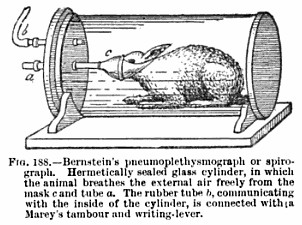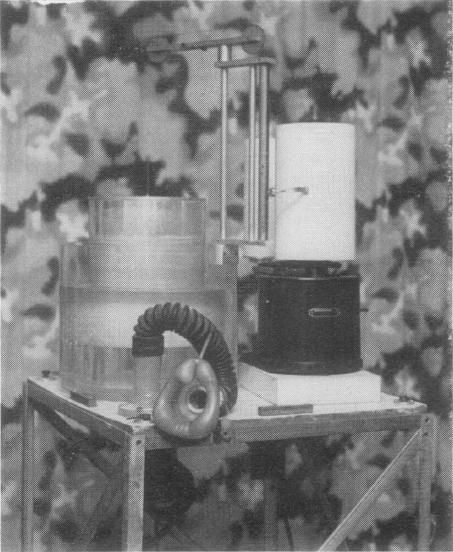From Human Physiology, Volume 1, By Luigi Luciani, published by Macmillan and Company, 1911, page 425.
“The same effect may be obtained when the animal is breathing free air, while enclosed within a hermetically sealed glass cylinder (Knoll). A tube tied in the trachea, or fitting tightly over the mouth and nostrils of the animal, passes through the wall of one box and communicates with the external air. The internal air of the box is connected by means of a second tube with a recording tambour, and traces, like a plethysmograph, the variations in the total volume of the animal , corresponding to the inspiratory and expiratory movements. The simplest application of this method is that of Bernstein, represented in Fig. 188.

